Fluffy giant Japanese-style souffle pancakes are a fun brunch or breakfast. They are cooked on the stove top and are a unique twist to traditional pancakes.
Many of you know that I am obsessed with Japanese souffle pancakes. I first tasted them at Cafe Gram during my Japan trip. I then tried to recreate them at home with this recipe.
There are many kinds of souffle pancakes offered in Japan and one of the ones I came across but didn’t have time to try were giant souffle pancakes. Recently, I found a recipe from Tasty creating a similar pancake. While I didn’t ultimately follow their recipe, it did give me insight into how the giant souffle pancakes are made.
Taste and Texture
I would describe these pancakes as a cross between American pancakes and Japanese souffle pancakes.
Because these pancakes are so big, they need more flour than the typical souffle pancakes to hold their form. As a result, they aren’t quite as jiggly or light, but they are a lot lighter than traditional pancakes.
These pancakes use less eggs than most souffle pancakes so they have less of that eggy souffle taste. They have a buttery taste, reminiscent of American pancakes. They are also lightly sweetened, like Japanese-style pancakes.
Essential Equipment
-
- These pancakes are cooked in a 6-inch non-stick frying pan (6 inches measured across the bottom, 8 inches measured across the top). A non-stick pan is key, otherwise it will be very difficult to remove the pancake in one piece.
- You will also need a lid that fits over your frying pan. The pancake must be kept covered during cooking. The lid will lock in the moisture, help the rise of the pancake and increase the internal heat inside the pan so that the pancake cooks faster.
- A very thin spatula (I used this cookie spatula*) is needed to loosen the pancake from the pan so that it comes out in one piece.
- An electric mixer is needed to whip the egg whites to stiff peaks. The egg whites are the key to the souffle texture.
- You will need a small mesh strainer to sift your flour. (Or a flour sifter, if you own one but I always just use a mesh strainer.)
Tips for Whipping the Egg Whites
- You want to whip the egg whites until they form stiff peaks. What this means is when you remove your beater, the tip of the egg whites should hold its form. If the tip flops over, you have only reached the soft peaks stage. You also need to make sure you don’t overbeat past the stiff peaks stage.
- It’s best to keep the egg whites chilled until right before you are going to beat them to achieve the stiff peaks. If it’s particularly warm in your kitchen, you may want to also consider chilling the mixing bowl.
- Make sure your beaters and mixing bowl are completely clean and dry before you start. Your egg whites must also be completely clean and free of any egg yolk. If even a drop of egg yolk touches your egg whites, they will not whip up.
Tips for Folding the Egg Whites
- Make sure you use a spatula and not a whisk. You want to be as gentle as possible as to not let your egg whites deflate too much.
- To fold, scoop batter from the bottom and fold over on top of the egg whites. Continue repeating with this motion, occasionally changing direction until all egg whites are incorporated into the batter. The batter should become very light and airy.
Cooking Tips
- Keep the heat low, around a level 4 (out of 10). If the heat is too high, the bottom of your pancake will overcook before the rest of it is done.
- Make sure you do not try to make your pancakes too thick as it will take too long for them to cook all the way through.
*Some of the product links contained in this post are affiliate links. Much like referral codes, this means I earn a small commission if you purchase a product I referred (at no extra charge to you).
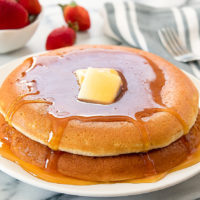
Giant Souffle Pancakes
Ingredients
- 3 tbsp unsalted butter melted
- 1 cup warm fat-free milk
- 1 tsp vanilla
- 1 large egg yolk
- 1 cup all purpose flour
- 1 tbsp baking powder
- 2 egg whites chilled (from large size eggs)
- 1/4 cup granulated white sugar
Instructions
- In a large mixing bowl, combine melted butter with warm milk. (The milk only needs to be slightly warmed up so that it will not cause the butter to re-solidify. You don't want the milk to be hot because this will then cook the egg yolk.) Whisk until combined. Add in egg yolk and vanilla and whisk until evenly mixed in.
- Sift in 1 cup flour using a mesh strainer or flour sifter. Sifting the flour is key to keeping the pancake light and keeping it from collapsing. Add in baking powder. Whisk until batter is smooth and lump-free.
- Add chilled egg whites and sugar to your stand mixer bowl. Beat at highest speed until stiff peaks form. (See picture and notes above regarding stiff peaks).
- Add 1/3 of the egg whites to your pancake batter. Gently fold in the egg whites with a spatula until egg white lumps disapper. Add in another 1/3 of egg whites and repeat. Add in final portion of egg whites and repeat. Be careful not to fold/mix too aggresively because that will cause the egg whites to deflate too much and the pancake will not rise correctly.
- Warm an 6 inch nonstick frying pan (6 inches measured across the bottom, 8 inches wide measured across the top) over the stove. You want your heat level to be slightly below medium. I set mine at 4 (out of 10). If you have two pans, you can cook both pancakes at the same time, but if you only have one, you will need to repeat steps 5 &6 for your second pancake.
- When pan has warmed up, pour in 1 ½ cups batter. Place lid over pan. Cook for about 20 minutes or until pancake is fully cooked and the crust of the pancake is a light golden brown. To test if pancake is cooked all the way through, touch the top of the pancake. It will stay pale but when you touch it, the batter should not be wet or stick to your finger. I found that the pancake was mostly cooked around 15 minutes but the crust was still quite pale. You can check on the color of the pancake by gently prying one side with a spatula, taking a quick peek, and then quickly placing it back in place. The extra 5 minutes helps the pancake crust turn a nice light golden brown and ensures that the pancake is completely cooked. To remove pancake, use a very thin and flexible spatula (I used this cookie spatula*) to loosen the edges and then the bottom. Slide pancake upside down onto plate. If you were only using one pan, repeat steps 5-6 with remaining batter to make your second pancake.
- Serve pancakes with syrup, butter and fresh fruit or other toppings of your choice.
Notes
- These pancakes are cooked in a 6-inch non-stick frying pan (6 inches measured across the bottom, 8 inches measured across the top). A non-stick pan is key, otherwise it will be very difficult to remove the pancake in one piece.
- You will also need a lid that fits over your frying pan. The pancake must be kept covered during cooking. The lid will lock in the moisture, help the rise of the pancake and increase the internal heat inside the pan so that the pancake cooks faster.
- A very thin spatula (I used this cookie spatula*) is needed to loosen the pancake from the pan so that it comes out in one piece.
- An electric mixer is needed to whip the egg whites to stiff peaks. The egg whites are the key to the souffle texture.
- You will need a small mesh strainer to sift your flour. (Or a flour sifter, if you own one but I always just use a mesh strainer.)
- You want to whip the egg whites until they form stiff peaks. What this means is when you remove your beater, the tip of the egg whites should hold its form. If the tip flops over, you have only reached the soft peaks stage. You also need to make sure you don't overbeat past the stiff peaks stage.
- It's best to keep the egg whites chilled until right before you are going to beat them to achieve the stiff peaks. If it's particularly warm in your kitchen, you may want to also consider chilling the mixing bowl.
- Make sure your beaters and mixing bowl are completely clean and dry before you start. Your egg whites must also be completely clean and free of any egg yolk. If even a drop of egg yolk touches your egg whites, they will not whip up.
- Make sure you use a spatula and not a whisk. You want to be as gentle as possible as to not let your egg whites deflate too much.
- To fold, scoop batter from the bottom and fold over on top of the egg whites. Continue repeating with this motion, occasionally changing direction until all egg whites are incorporated into the batter. The batter should become very light and airy.
- Keep the heat low, around a level 4 (out of 10). If the heat is too high, the bottom of your pancake will overcook before the rest of it is done.
- Make sure you do not try to make your pancakes too thick as it will take too long for them to cook all the way through.
Nutrition
The nutrition information provided are only estimates based on an online nutritional calculator. I am not a certified nutritionist. Please consult a professional nutritionist or doctor for accurate information and any dietary restrictions and concerns you may have.

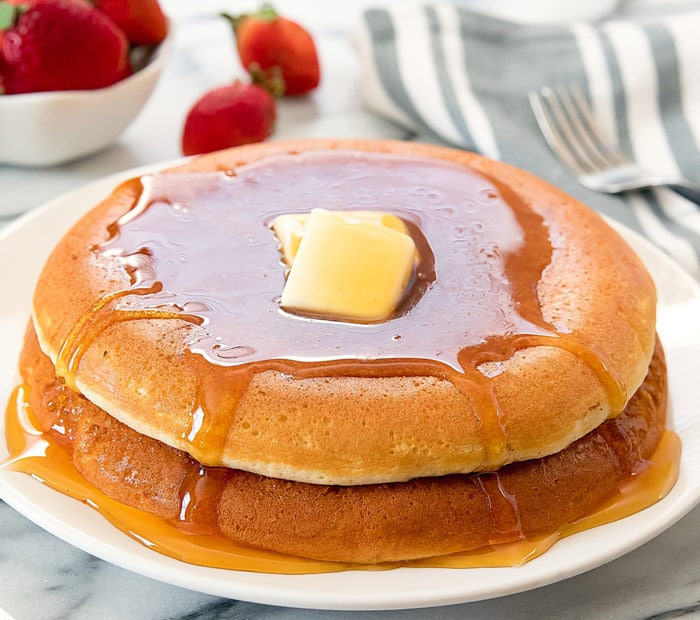
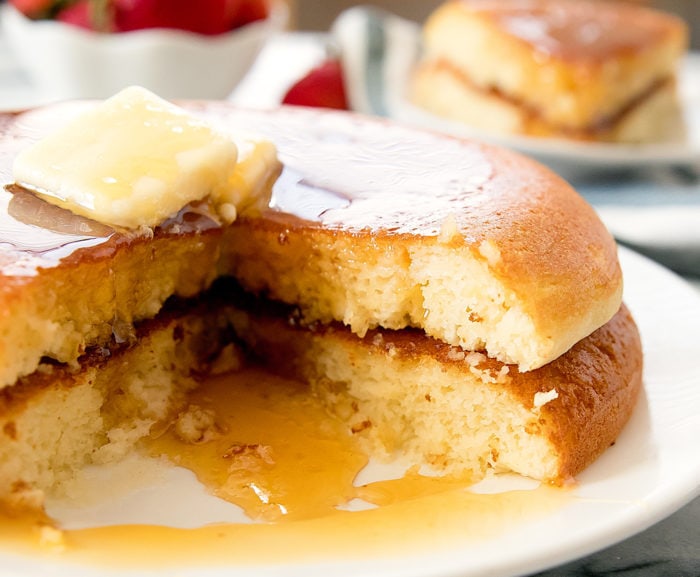
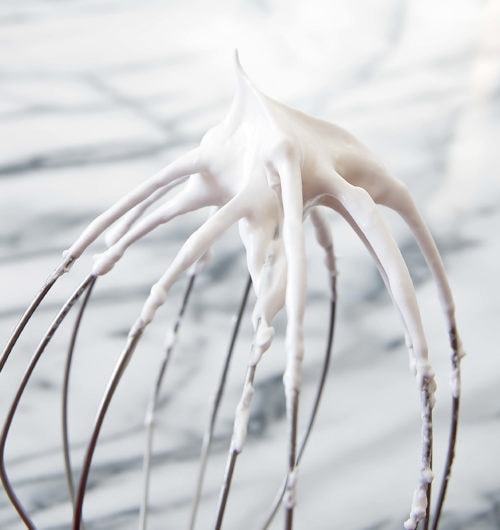
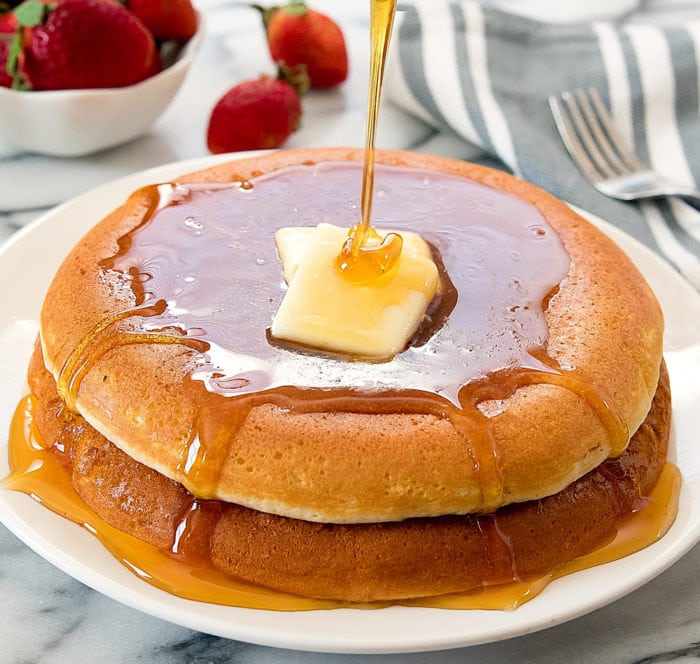
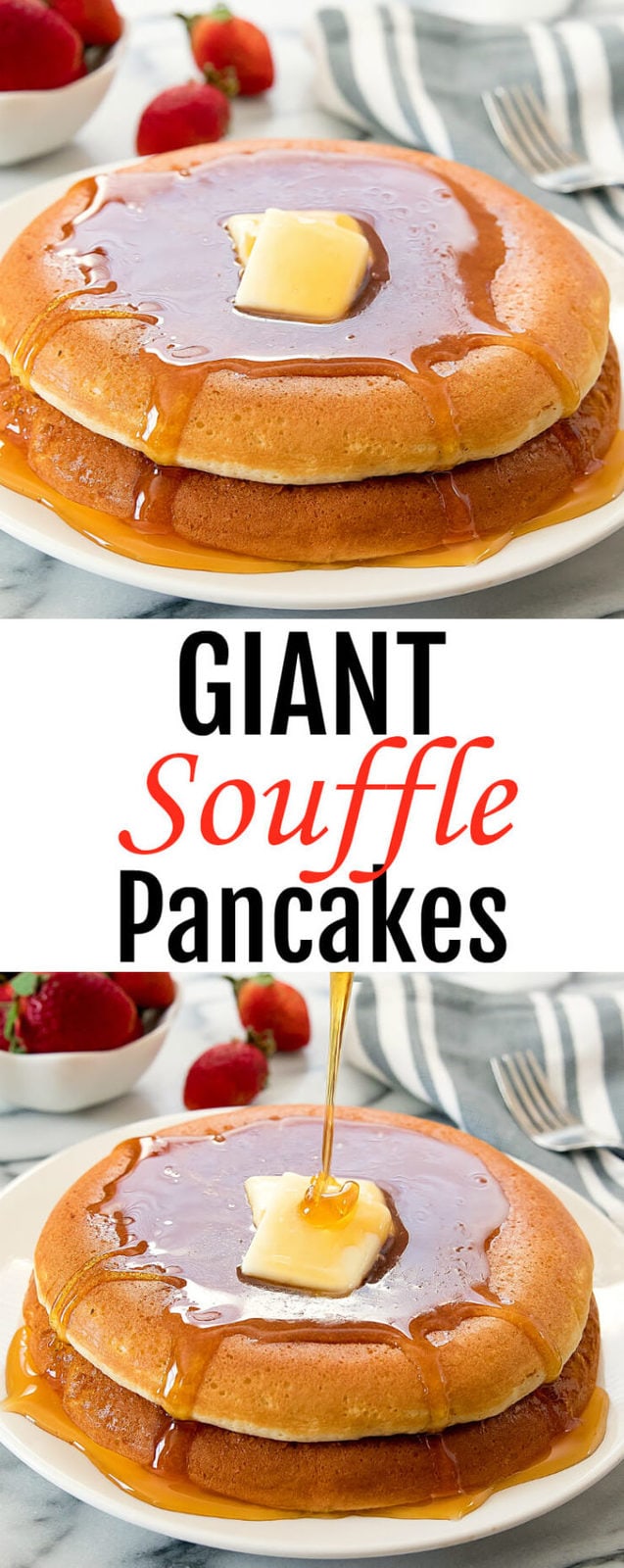


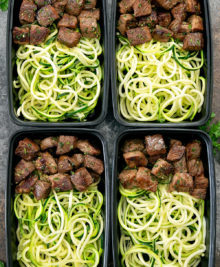
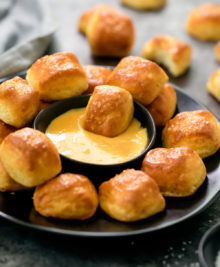
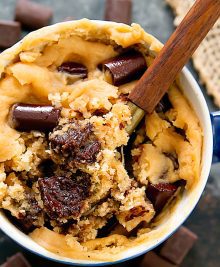
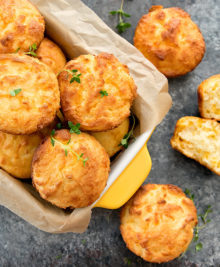
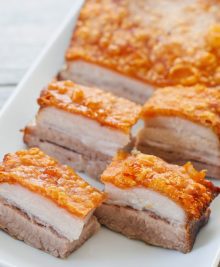
This recipe reminds me a lot of an Austrian/Bavarian Kaiserschmarrn! That is a giant souffle pancake, but when the pancake is mostly cooked through you tear it into pieces and cook it a little longer in the pan (the name mean’s ‘Emperor’s Mess’ or something). I find it kind of a pain to make because being so big it takes a while to cook and you have to have the heat low like you say; I get impatient waiting for it (and flipping it is … a challenge) but my boyfriend is Bavarian so we make it together sometimes. I like that Austro-Bavarian desserts can be eaten as the main dish, pancake for dinner is the best.
that sounds so interesting! I’ve never had it but now I want to try it